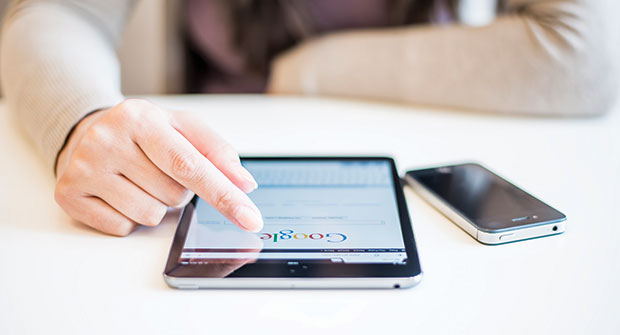From mainframes to smartphones — how technology transformed in the last 40 years
A smartphone is an essential tool we all use that has changed everything. My recollection of the past 40-plus years makes the smartphone seem remarkable compared to the technology in the 1980s.

(Photo: Ivanko_Brnjakovic/iStock Editorial / Getty Images Plus/Getty Images)
In 1980, I ran my first statistical analysis program using computer cards on an IBM 360 mainframe. The IBM beast was in the basement of the math and science building at Oklahoma State University.
By 1983, my Ph.D. dissertation had more than 5,000 data cards. Thankfully, I was allowed to use the mainframe’s hard disk and tape backup, so the cards did not have to load for each data analysis.
The size of a carry-on suitcase, I typed my dissertation on a new Compaq portable computer in 1984. Folded down, the keyboard attached to the bottom of the computer revealed a 9-inch green screen and two floppy drives. I bought an Epson dot-matrix printer and used that for most of the 1980s.
As an assistant professor in 1985, the university provided an IBM AT desktop computer with a 30-gigabyte hard drive and a 3.5-inch removable disk drive. I still had a paper diary and Rolodex for keeping track of appointments and contacts.
Compuserve Information Service opened its network to the public in 1979. By 1981, the baud rate was 300 bits per second and cost $5 per hour during non-peak usage. (By comparison, the baud rate of today’s computers ranges between 19,200 to 115,200.) By 1989, I was using Compuserve but never sent an email while on the faculty at Oklahoma State.
In 1990, when I started with the USGA Green Section, desktop computers were available. However, daisy wheel printers were still preferred to make letters and reports look hand-typed. I bought my own HP laser printer since they were much faster and provided several fonts or page formatting for new word processing.
Going mobile
In the mid-1990s, cell phones and personal digital assistants became available. The first laptop computers were starting to be affordable. To a traveling road warrior, these provided an office on the go. However, cell phone service was expensive. Using the newly emerging internet and email technology, one had to be MacGyver to get a modem to work in hotel rooms.
In the early 2000s, a cell phone, PDA — like a Palm Pilot — and access to the internet through a laptop computer using a modem were available.
Blackberry had a two-way pager in 1999, and in 2002, it released the BlackBerry 5810 with a built-in mobile phone. It was not until 2007 that Apple released the first iPhone against stiff competition from the Blackberry.
In 2007, my son, Charles, worked at Walmart in the technology department. I had a BlackBerry at the time, and he proudly purchased the first iPhone. We would race to see who could download information from the internet faster. He always won, and the screen was twice the size of my BlackBerry. Shortly after this defeat, I purchased an iPhone while the USGA stuck to BlackBerry for several more years.
Incredible technology
The smartphone most everyone has today is like having a small computer that does everything a trunk load of equipment did just a few decades earlier. Good or bad, we have a device that connects to the internet and many wireless devices.
The smartphone provides freedom from landlines and your desk. With the cloud, you have access to years of files and photos. Using Google or Bing allows access to the answer to almost any question. News, videos and many different entertainment options are available on smartphones.
In a pinch, you can attend webinars or conference calls on your phone.
The smartphone freed people who like to work outdoors instead of being chained to a desk. But occasionally, turn the thing off and enjoy the sunrise or sunset and the people you are with each day!

Photo: Mike Kenna, Ph. D.
Mike Kenna, Ph.D., is the retired director of research, USGA Green Section. Contact him at mpkenna@gmail.com.












